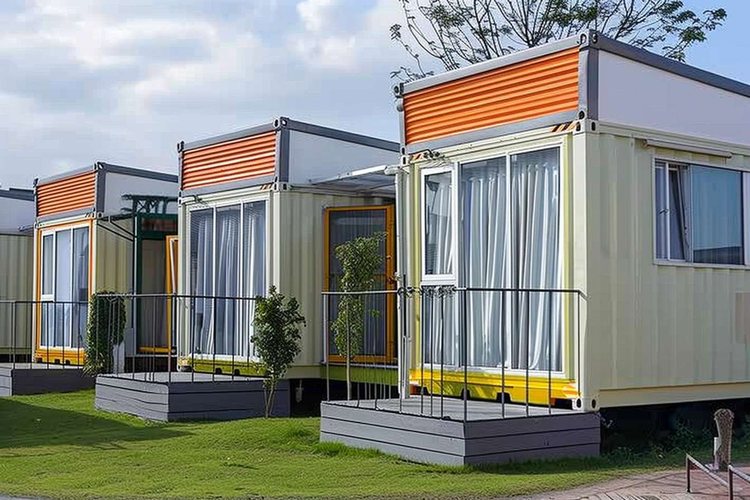Is a Prefab or Modular Home Right for You? Key Benefits, Costs, and Fast-Build Secrets for 2025 UK Buyers
Did you know that modular homes in the UK often offer faster construction times and potentially lower costs compared to traditional builds? With factory-built options providing energy savings, custom designs, and flexible financing possibilities, discover how these homes are increasingly influencing the UK housing market in 2025.

The housing landscape in the UK continues to evolve, with prefabricated and modular homes gaining significant traction as viable alternatives to conventional construction. As housing demands change and environmental concerns grow, these innovative building solutions offer compelling advantages for prospective homeowners. In 2025, the market for prefab homes has matured considerably, presenting UK buyers with diverse options across various price points and designs. This comprehensive guide explores whether a prefabricated or modular home might be the right choice for your housing needs.
Construction Methods and Approaches
Prefabricated and modular homes utilize several distinct construction methodologies, each with unique characteristics. Panel systems involve factory-produced wall, floor, and roof panels that are transported to the site and assembled. Volumetric construction creates three-dimensional modules complete with interior finishes that are joined together on-site. Hybrid approaches combine these methods, often using panelized systems for the main structure and volumetric units for complex areas like kitchens and bathrooms.
Quality control represents a significant advantage of factory-based construction. With production occurring in controlled environments, materials aren’t exposed to weather damage, and precision manufacturing equipment ensures consistent results. Advanced technologies including computer-aided design and manufacturing (CAD/CAM) systems have dramatically improved the accuracy and customization possibilities of prefabricated elements.
Modern prefab homes also incorporate sustainable building practices more easily than traditional construction. Factory settings minimize material waste through optimized cutting patterns and recycling programs. Additionally, improved insulation techniques and airtight construction deliver superior energy efficiency once the home is complete.
Benefits of Prefabricated and Modular Build Solutions
The advantages of choosing prefabricated construction extend beyond the building process itself. Energy efficiency stands as a primary benefit, with factory-precision ensuring tight building envelopes that minimize heat loss. Many prefab homes achieve excellent energy performance ratings, potentially reducing utility bills by 20-30% compared to conventional builds of similar size.
Design flexibility has evolved significantly in recent years. The outdated perception of cookie-cutter prefab homes no longer applies, with manufacturers now offering extensive customization options. From architectural styles to interior finishes, modern prefab homes can be tailored to individual preferences while maintaining the efficiency benefits of standardized production.
Quality assurance represents another significant advantage. Factory construction allows for multiple inspection points throughout the manufacturing process, often resulting in fewer defects than site-built homes. Additionally, the controlled environment eliminates weather-related delays and potential material damage that can compromise building integrity.
Build Timelines and Delivery
One of the most compelling advantages of prefabricated construction is the dramatically reduced build time. While traditional construction typically takes 9-18 months in the UK, prefab homes can be manufactured, delivered, and completed in 3-6 months. This efficiency stems from parallel processes—site preparation and foundation work can occur simultaneously with factory module production.
The delivery and installation process follows a carefully orchestrated sequence. Once modules arrive on site, specialized equipment positions them precisely on prepared foundations. Weather-tight connections are established rapidly, often allowing a home to be structurally complete within days rather than months.
Factors affecting timelines include project complexity, site accessibility, and local permitting requirements. Rural locations with challenging access may require additional logistics planning, while urban sites might face parking restrictions for delivery vehicles. Working with experienced manufacturers who understand these variables helps ensure smooth project progression.
Notable Manufacturers and Service Providers
The UK prefab housing market features several established manufacturers with distinct specializations and approaches. Urban Splash leads in contemporary modular designs with their House by Urban Splash collection, offering customizable layouts aimed at modern living. Ilke Homes focuses on affordable, energy-efficient modular homes with integrated smart technology systems. Legal & General Modular Homes delivers precision-engineered properties with strong sustainability credentials and standardized quality.
Regional variations exist in service availability, with greater concentration of providers in England compared to Scotland, Wales, and Northern Ireland. Many manufacturers now offer comprehensive services beyond production, including site assessment, planning assistance, and turnkey installation solutions.
Costs in 2025 and Factors to Consider
Prefabricated home pricing varies considerably based on specification levels, size, and design complexity. Entry-level modular homes in 2025 typically start around £150,000 for a two-bedroom property (excluding land costs), while high-specification designs can exceed £350,000. Additional considerations include foundation requirements, site preparation, utility connections, and transportation logistics.
| Provider | Basic Model Cost (2-bed) | Premium Model Cost (3-4 bed) | Energy Rating | Build Time |
|---|---|---|---|---|
| Urban Splash | £180,000-£220,000 | £300,000-£400,000 | EPC A | 3-4 months |
| Ilke Homes | £150,000-£190,000 | £250,000-£320,000 | EPC A | 4-5 months |
| Legal & General | £170,000-£210,000 | £280,000-£360,000 | EPC A | 3-5 months |
| Boutique Modern | £190,000-£230,000 | £320,000-£420,000 | EPC A | 4-6 months |
Prices, rates, or cost estimates mentioned in this article are based on the latest available information but may change over time. Independent research is advised before making financial decisions.
Financing prefabricated homes has become more straightforward as mainstream lenders have grown familiar with the construction method. Most major UK banks and building societies now offer mortgages for prefab properties, though some may require additional documentation regarding the building system and warranty coverage. Insurance costs typically align with traditional construction once the home is complete.
Making the Right Decision for Your Housing Needs
Determining whether a prefab home suits your situation involves weighing several factors. For those prioritizing rapid construction and move-in timelines, prefab offers clear advantages. Environmentally conscious buyers benefit from the reduced waste and enhanced energy efficiency of factory production. Budget-conscious purchasers should carefully compare total project costs—while the home itself may cost less than traditional construction, site preparation and utility connections can add significant expense.
The planning permission process for prefabricated homes follows the same regulations as conventional buildings. Local authorities assess applications based on design appropriateness, environmental impact, and compliance with building regulations rather than construction methodology. Working with manufacturers experienced in navigating these requirements can streamline approvals.
As the prefabricated housing sector continues maturing in the UK, buyers benefit from increased options, improved quality, and greater acceptance within the broader housing market. For many, these innovative construction approaches offer a practical pathway to homeownership that balances quality, efficiency, and environmental responsibility in ways traditional building methods cannot match.




